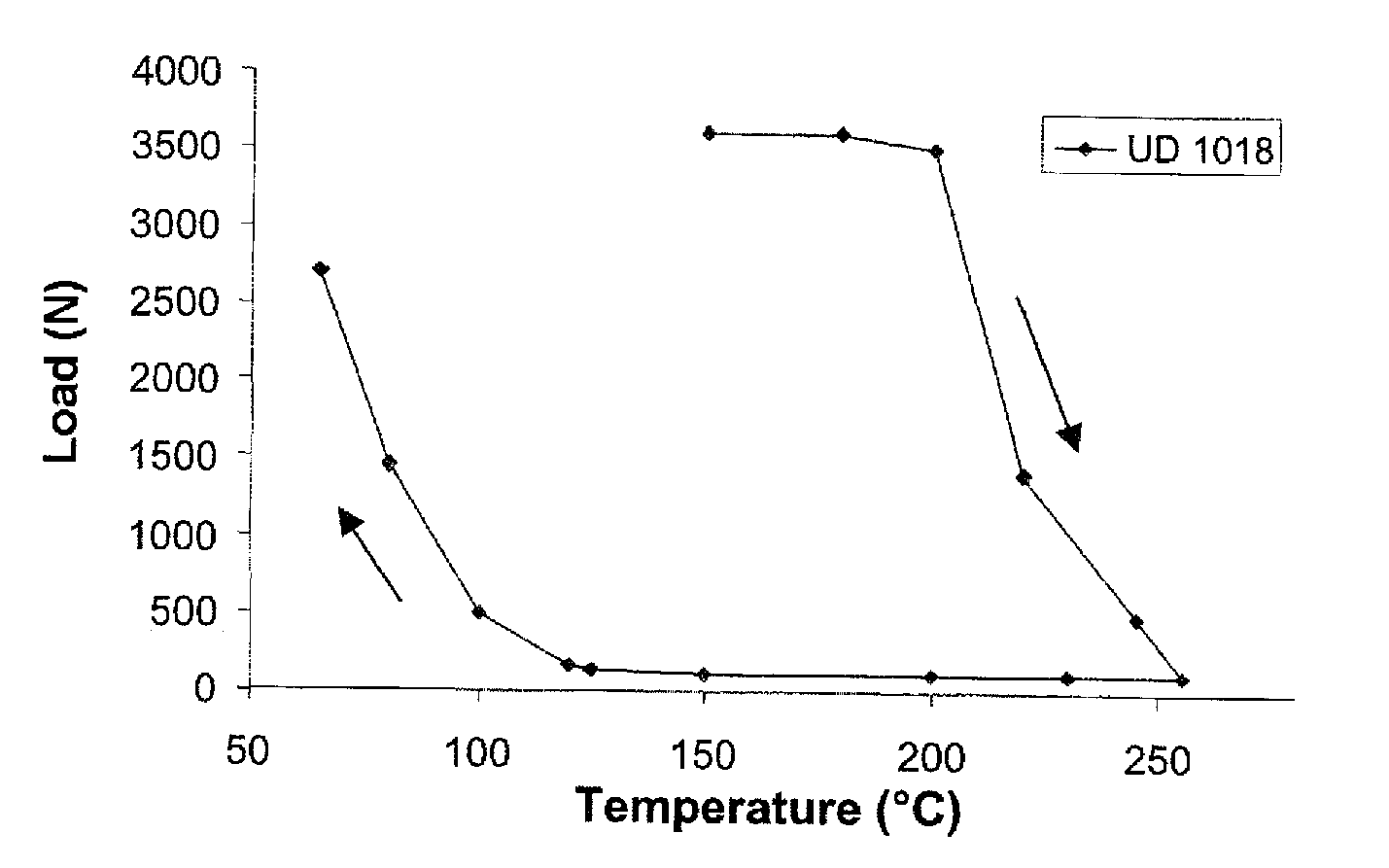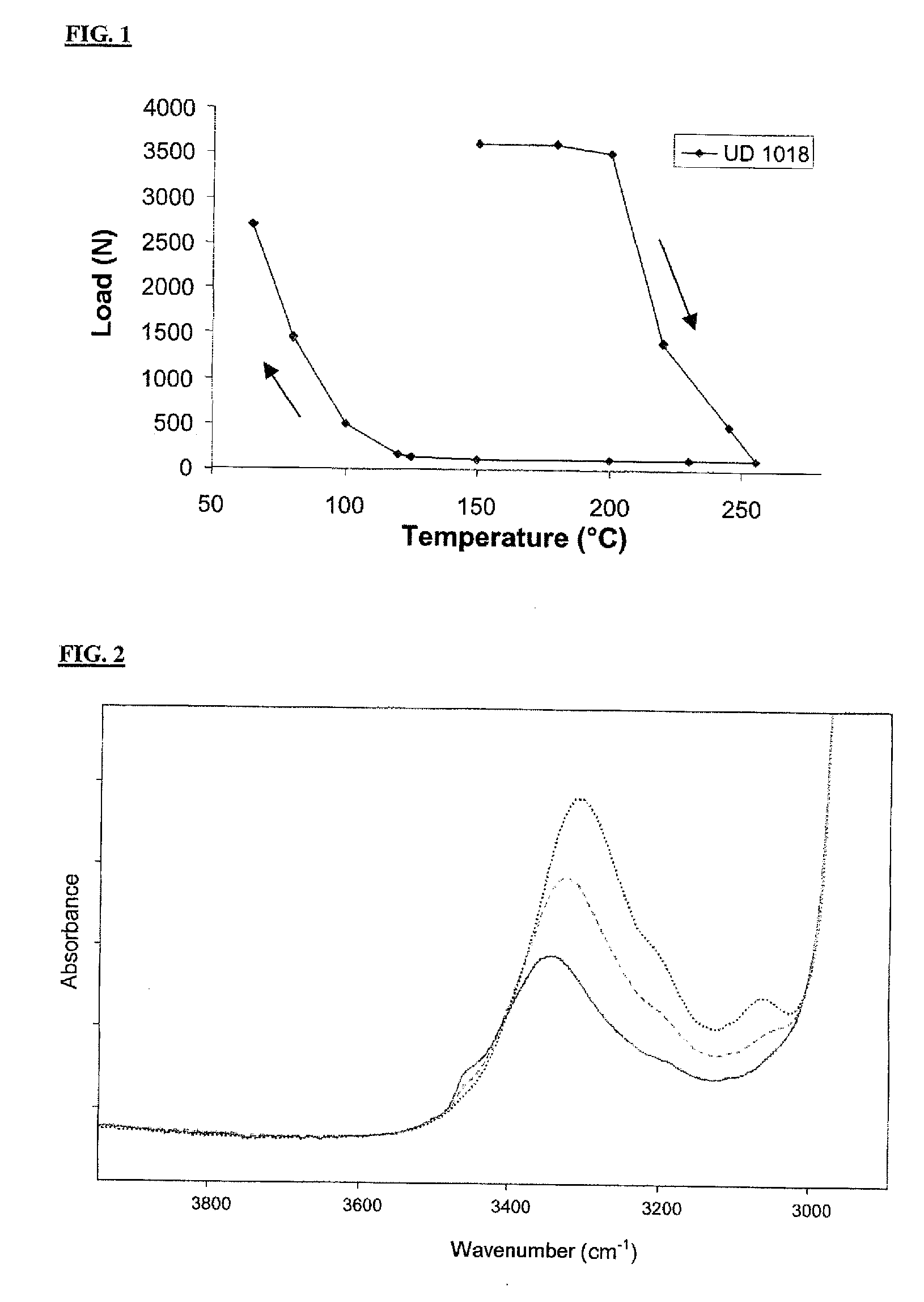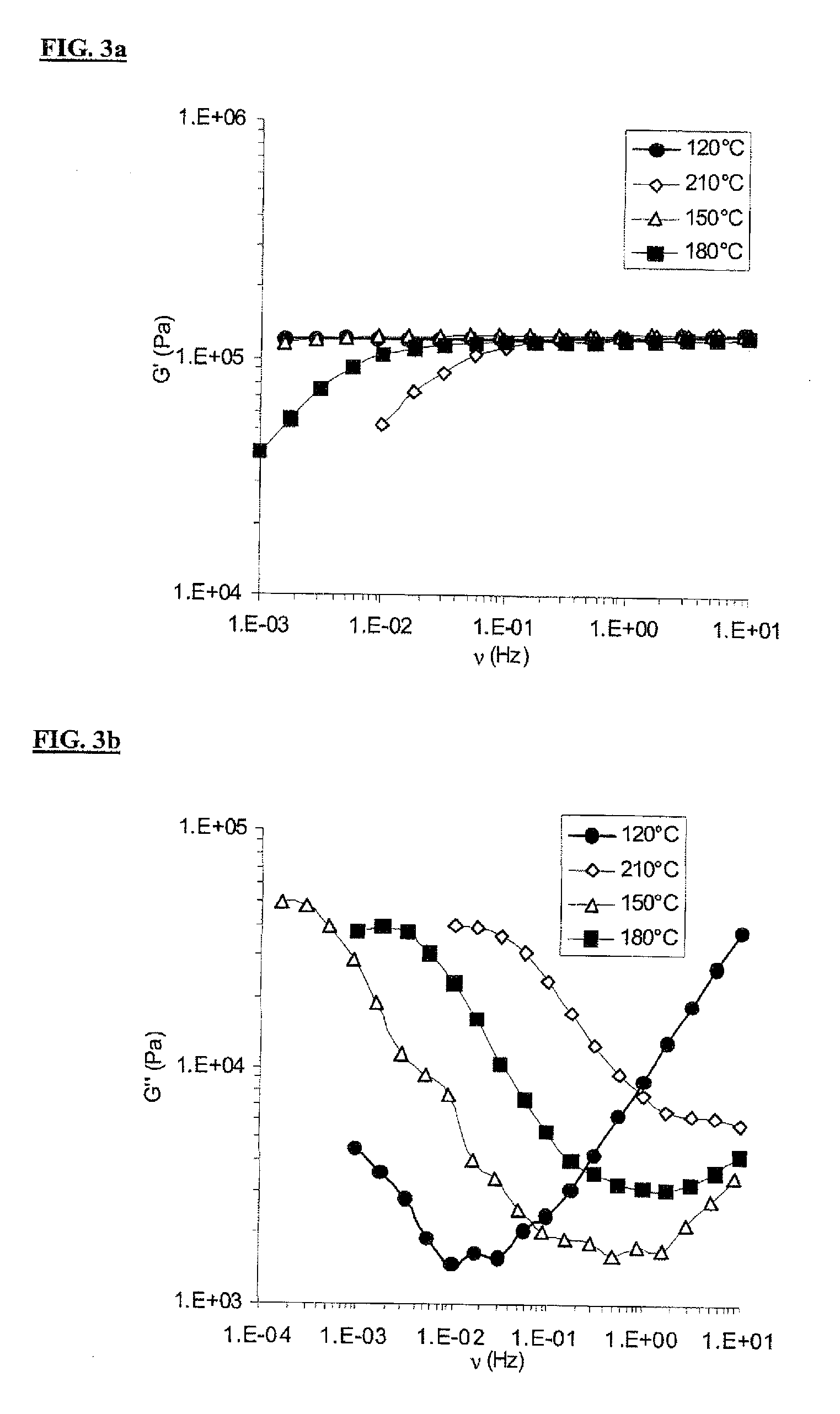Elastic materials
a technology of elastic materials and materials, applied in the field of elastic materials, can solve the problems of self-repair and potential recycling of materials
- Summary
- Abstract
- Description
- Claims
- Application Information
AI Technical Summary
Benefits of technology
Problems solved by technology
Method used
Image
Examples
example 1
Synthesis UT 1008 (DA+TETA+urea)
[0062]15.00 g (0.103 mol) of TETA and 57.00 g of Empol1008® (mixture of fatty acids containing 3.5% of monoacid of mass 280±70 g / mol, 89.5% of diacid (formulae I, III) and 7% of triacid (formulae II, IV) and polyacid derived from the monoacid) are added to a 250 ml thermoregulated jacketed reactor equipped with an anchor stirrer and nitrogen sweeping. The reaction is carried out at 160° C. for 24 h. The mixture is then cooled to 130° C.
[0063]6.60 g (0.11 mol) of urea are added. After approximately 5 min, it is observed that gaseous ammonia is given off (verified with pH paper), accompanied by foaming of the reaction medium.
[0064]When the ammonia being given off decreases, the temperature is increased in 5° C. increments and so on up to 150° C. The reaction mixture becomes difficult to stir. The heating is stopped and the UT 1008 product is recovered by detaching it from the stirrer anchor. It is then placed in a vacuum oven for one week at 70° C. (vac...
example 2
Synthesis UD 1018 (DA+DETA+urea)
[0065]22.00 g (0.194 mol) of DETA and 54.40 g of Empol 1018® (mixture of fatty acids containing 4% of monoacid of mass 280±70 g / mol, 79% of diacid (formulae I, III) and 17% of triacid (formulae II, IV) and polyacid derived from the monoacid) are added to a 250 ml thermoregulated jacketed reactor equipped with an anchor stirrer and nitrogen sweeping. The reaction is carried out at 160° C. for 24 h. The mixture is then cooled to ambient temperature.
[0066]Approximately 70 ml of chloroform are added to this product, in order to solubilize the product. Demineralized water (150 ml) is then added to fill the reactor. The mixture is stirred in order to extract the excess DETA from the organic phase. After separation of the two phases, the aqueous phase is removed and the operation is repeated a second time. The chloroform is then evaporated at 70° C. under a strong stream of nitrogen.
[0067]Once the chloroform has been evaporated, the mixture is heated to 130°...
PUM
| Property | Measurement | Unit |
|---|---|---|
| Fraction | aaaaa | aaaaa |
| Fraction | aaaaa | aaaaa |
| Fraction | aaaaa | aaaaa |
Abstract
Description
Claims
Application Information
 Login to View More
Login to View More - R&D
- Intellectual Property
- Life Sciences
- Materials
- Tech Scout
- Unparalleled Data Quality
- Higher Quality Content
- 60% Fewer Hallucinations
Browse by: Latest US Patents, China's latest patents, Technical Efficacy Thesaurus, Application Domain, Technology Topic, Popular Technical Reports.
© 2025 PatSnap. All rights reserved.Legal|Privacy policy|Modern Slavery Act Transparency Statement|Sitemap|About US| Contact US: help@patsnap.com



